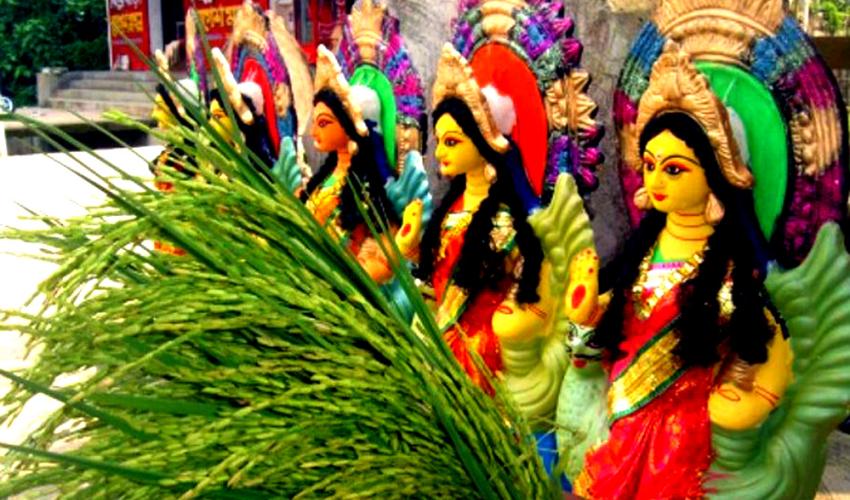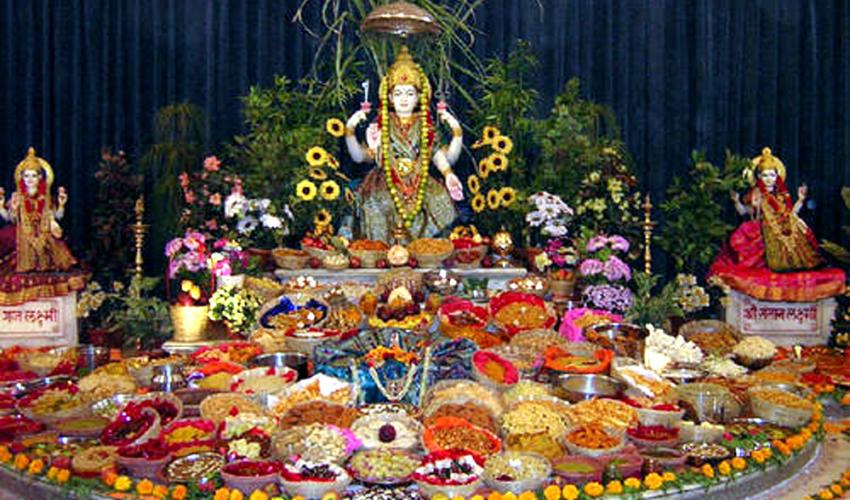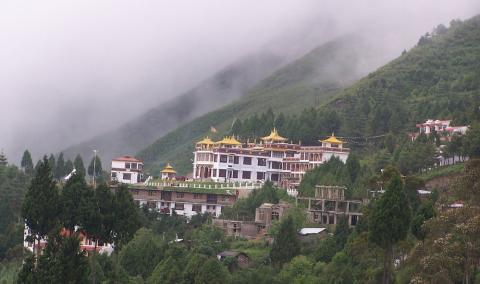Autumn and festivity in Assam are synonymous to each other. The king of the seasons is characterized by sweet fragrance of season flowers, starry sky, dew drops on the grass, fluttering clouds and calm rivers apart from the blooming lily and lotus in the water bodies. The Hindus find it an occasion to worship the goddess Durga, goddess Laxmi and the goddess Kali. Laxmi puja takes place on the full moon day after the Durga puja where the devotees seek blessings from the goddess of wealth.
Earthen lamps illuminate every household in the rural and urban areas in the evening when the goddess is worshipped for wealth and property. Idols of the goddess are installed putting many seasonal fruits and flowers in front of it. Rice is restricted in many places on that day and the shops and markers are flooded with the puja items, flowers, fruits and idols.
Foreign and domestic tourists find it a pleasant occasion to catch a glimpse of the cultural functions the urban areas. These are apart from quiz, dance and drawing competitions in many places.
In the rural Assam, the goddess is worshipped with no less traditional religious fervour. The goddess in the rural Assam is believed to have been existing in the paddy fields. Rows and rows of earthen lamps transform the paddy fields into a pleasant land in the evening. The female folks visit the temples and namghars with rice powders in search of Her blessings for the upcoming period. Rice powders are required to worship the presiding deity. This is an occasion for the rural peasants to start consuming the nuts of the season. Earthen lamps are also lit up before the granaries which turn empty just before the beginning of the new crop cutting season. The goddess is represented as a beautiful golden woman sitting on a lotus. She was reborn during the churning of the milk ocean as Lakshmi and was then married to the Lord Vishnu and has a clear share in Vishnu's activities as preserver.
Earthen lamps illuminate every household in the rural and urban areas in the evening when the goddess is worshipped for wealth and property. Idols of the goddess are installed putting many seasonal fruits and flowers in front of it. Rice is restricted in many places on that day and the shops and markers are flooded with the puja items, flowers, fruits and idols.
Foreign and domestic tourists find it a pleasant occasion to catch a glimpse of the cultural functions the urban areas. These are apart from quiz, dance and drawing competitions in many places.
In the rural Assam, the goddess is worshipped with no less traditional religious fervour. The goddess in the rural Assam is believed to have been existing in the paddy fields. Rows and rows of earthen lamps transform the paddy fields into a pleasant land in the evening. The female folks visit the temples and namghars with rice powders in search of Her blessings for the upcoming period. Rice powders are required to worship the presiding deity. This is an occasion for the rural peasants to start consuming the nuts of the season. Earthen lamps are also lit up before the granaries which turn empty just before the beginning of the new crop cutting season. The goddess is represented as a beautiful golden woman sitting on a lotus. She was reborn during the churning of the milk ocean as Lakshmi and was then married to the Lord Vishnu and has a clear share in Vishnu's activities as preserver.






